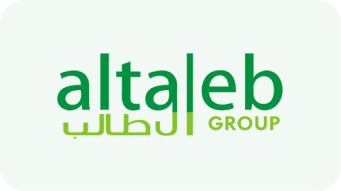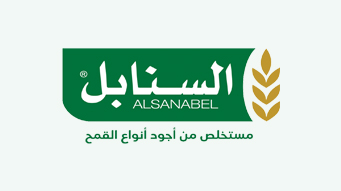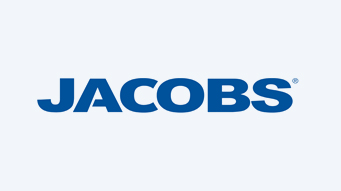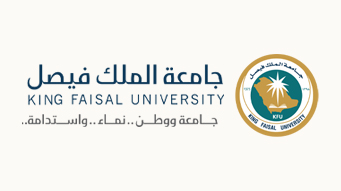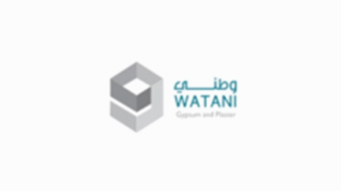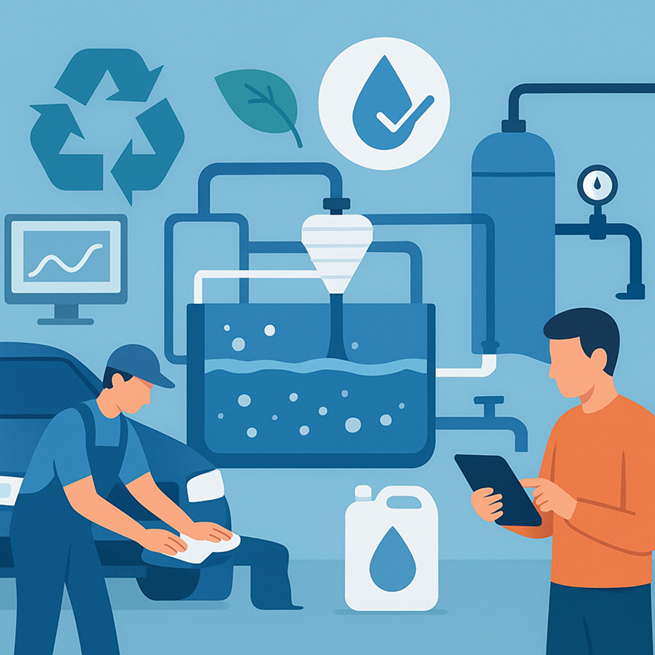
Strategies to Conserve Water in Auto Body Shops
Auto service centers can adopt a variety of water conservation strategies to reduce their environmental impact while enhancing operational efficiency. One of the most prominent of these methods is the implementation of waterless cleaning technologies, which significantly reduces water usage compared to traditional washing methods. Additionally, service centers can incorporate highly efficient equipment and water-saving recycling systems that purify and reclaim water, further reducing reliance on freshwater sources.
Primary Oil Separation Unit in Car Wash Water Treatment Plants
The oil separator unit (which includes a dirt trap/grid, a slow-flow passage, and an oil screen) is the initial and essential step in a car wash water treatment system. Its primary purpose is to remove large and suspended contaminants before the water enters the fine filtration stages. Its importance includes the following: First, it traps coarse dirt, sediment, oil, and grease that are washed off the car. Second, it helps protect subsequent stages of the treatment system, such as pumps, sand and carbon filters, and ultra-fine filter (UF membrane), from damage or premature clogging. This ensures longer system efficiency and reduces the need for costly maintenance, allowing wastewater to be converted into purified water for reuse in the car wash process.
Ultrafiltration (UF) System
Ultrafiltration is a membrane filtration process used to remove large particles, suspended solids, bacteria, and some viruses, producing purified, usable water.
The system is described as a Car Wash Water Treatment, and the process flow diagram shows the main ultrafiltration components, such as the ultrafiltration membrane (UF), as well as the primary treatment and pre-filtration units, such as:
- Sand Filter.
- Carbon Filter.
- Cartridge Filter.
Environmentally Friendly Products and Chemical Management
In addition to water conservation methods, the use of environmentally friendly products helps car service centers reduce their environmental footprint. For example, biodegradable cleaning agents effectively clean vehicles while protecting the environment. They prevent harmful chemicals from entering water systems.
Proper chemical management, including the use of reclaimed water from reclamation systems, helps prevent chemical buildup, protect equipment, and extend its lifespan.
Continuous Optimization and Monitoring
For automotive service centers to effectively manage water resources, continuous monitoring and optimization of water usage is critical. Regular audits and tracking of water consumption data can lead to targeted efficiency measures, significantly enhancing water conservation efforts. Many centers have reported cumulative water savings exceeding 50 million gallons thanks to these initiatives, demonstrating their commitment to sustainable resource management. By incorporating best practices and innovative technologies, automotive service centers can address water management challenges while contributing to environmental sustainability.
Preventive and Periodic Maintenance
Preventive and periodic maintenance are essential to ensure the continuity and efficiency of water treatment plants that rely on ultrafiltration (UF) technology, especially in the challenging operating environment of automotive service centers. Neglecting maintenance leads to premature fouling of ultrafiltration membranes due to the accumulation of oils and organic deposits. This reduces the efficiency of pure water production and significantly increases energy consumption. Therefore, a strict schedule must be implemented that includes regular backwashing of membranes and chemical cleaning procedures, in addition to scheduled replacement of sand, carbon, and cartridge filters. This approach not only extends the life of the equipment but also ensures the quality of the produced water and reduces operating costs and emergency repairs in the long run.
Other technologies that can be used in water treatment in large workshops and maintenance centers
Reverse Osmosis (RO) System
Technology: This is an advanced membrane filtration technology that uses high pressure to force water through a semi-permeable membrane to completely remove dissolved salts, chemicals, and very small particles.
Use and Importance: It is often used as the final stage after ultrafiltration or microfiltration. It produces ultra-pure water (demineralized water) that leaves no white spots or marks on car bodies after drying, reducing the need for manual drying.
Microfiltration (MF)
Technology: It uses membranes with pores slightly larger than ultrafiltration (0.1 to 10 micrometers). It removes suspended matter, bacteria, and large particles.
Use and Importance: It can be used as an advanced pretreatment or as a stand-alone solution for recycled water that doesn’t require ultrapurity (less expensive than UF or RO).
Chemical Treatment (Flocculation and Coagulation)
Technology: Adding chemicals (such as polymers or mineral salts) to water to combine fine particles and suspended contaminants into larger, heavier clumps (called flocks). This facilitates their settling and removal in sedimentation tanks.
Use and Importance: It is an effective and low-cost technology for treating large quantities of highly turbid water or industrial wastewater containing oils and suspended solids.
Evaporation/Crystallization Systems
Technology: Heating wastewater to evaporate pure water. Then cooling the steam is cooled to condense it to produce highly purified distilled water. It leaves all solid and concentrated contaminants as disposable waste.
Use and Importance: Ideal for facilities aiming to achieve “Zero Liquid Discharge” (ZLD). It means no wastewater is discharged outside the facility. This technology is expensive but achieves maximum environmental sustainability.
Biological Filtration
Technology: The use of bacteria and microorganisms in specialized biological reactors to decompose and break down organic contaminants (such as some cleaning agents and grease) present in wastewater.
Use and Importance: It is used as a primary or secondary treatment in some facilities to remove the large organic load before applying physical filtration techniques.
Read more about water recycling plants in automotive service centers
Results of Implementing Water Management Strategies
Implementing effective water management strategies in automotive service centers has significant benefits that go beyond compliance with regulations. The results of these strategies can be broadly categorized into environmental, operational, and financial benefits.
Environmental Benefits
Water conservation measures play a vital role in promoting sustainability in the automotive industry. For example, adopting rainwater harvesting systems enables service centers to reduce their dependence on municipal water sources by collecting rainwater and using it for non-potable purposes, such as irrigation. Gardens and car washes. This has been proven to reduce total water consumption by up to 40%.
Furthermore, by recycling the water used in washing operations, service centers can save thousands of gallons per week. This contributes to significant annual water conservation figures—more than 5 million gallons per year in some cases.
Operational Benefits
Optimizing water systems not only conserves resources but also enhances operational efficiency. Regular monitoring and optimization of water usage enables service centers to identify inefficiencies and implement targeted improvements. This has resulted in cumulative water savings exceeding 50 million gallons since conservation efforts began. Water management systems also facilitate water treatment and reuse. Ensuring a continuous supply for various operations while maintaining the quality standards necessary for automotive operations.
Financial Savings
Implementing water recycling and conservation measures translates directly into financial benefits. By reducing water purchase costs and wastewater bills, service centers can achieve significant cost savings. For example, water reclamation systems help operators save money. Thousands of dollars annually through reduced energy and operating costs.
Furthermore, while initial investments in water management technology may require significant funding. The long-term return on investment can be significant with lower ongoing operating costs. Overall, these financial savings can enhance the competitiveness of service centers in a market where cost management is increasingly critical.
Learn about the 5 most common water management challenges facing auto repair centers so you can overcome them.





